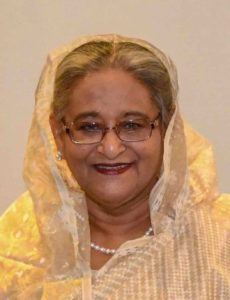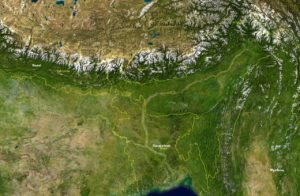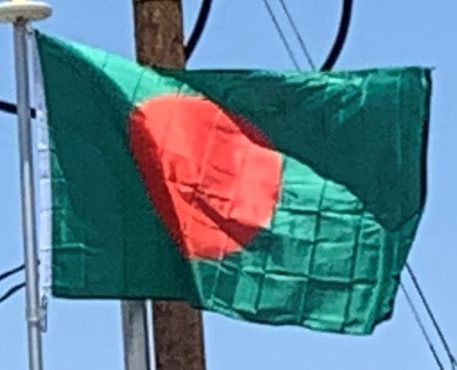Citing the lack of caretaker government the 2014 general election was boycotted by the BNP and other opposition parties, giving the Awami League a decisive victory. The election was controversial with reports of violence and an alleged crackdown on the opposition in the run-up to the election and 153 seats (of 300) went uncontested in the election. Despite the controversy Hasina went on to form a government which saw her return for a third term as Prime Minister. Due to strong domestic demand, Bangladesh emerged as one of the fastest-growing economies in the world. However, human rights abuses increased under the Hasina administration, particularly enforced disappearances. Between 2016 and 2017, an estimated 1 million Rohingya refugees took shelter in southeastern Bangladesh amid a military crackdown in neighboring Rakhine State, Myanmar.

In 2018, the country saw major movements for government quota reforms and road-safety. The Bangladeshi general election, 2018 was marred by allegations of widespread vote rigging. The Awami League won 259 out of 300 seats and the main opposition alliance Jatiya Oikya Front secured only 8 seats, with Sheikh Hasina becoming the longest serving prime minister in Bangladeshi history. Pro-democracy leader Dr. Kamal Hossain called for an annulment of the election result and for a new election to be held in a free and fair manner. The election was also criticized by the United States and the European Union, the largest export markets and foreign investment sources for Bangladesh.
Geography:
The geography of Bangladesh is divided between three regions. Most of the country is dominated by the fertile Ganges-Brahmaputra delta; the northwest and central parts of the country are formed by the Madhupur and the Barind plateaus. The northeast and southeast are home to evergreen hill ranges. The Ganges delta is formed by the confluence of the Ganges (local name Padma or Pôdda), Brahmaputra (Jamuna or Jomuna), and Meghna rivers and their respective tributaries. The Ganges unites with the Jamuna (main channel of the Brahmaputra) and later joins the Meghna, finally flowing into the Bay of Bengal.

Bangladesh is predominantly rich fertile flat land. Most parts of it are less than 39.4 feet above sea level, and it is estimated that about 10% of its land would be flooded if the sea level were to rise by 3.28 feet. 17% of the country is covered by forests and 12% is covered by hill systems.
Economy:
Bangladesh has the world’s 39th largest economy, which ranks second in South Asia after India. Bangladesh is also one of the world’s fastest-growing economies and one of the fastest growing middle-income countries. The country has a market-based mixed economy. A developing nation, Bangladesh is one of the Next Eleven emerging markets. Bangladesh’s largest trading partners are the European Union, the United States, Japan, India, Australia, China and ASEAN. The economy is driven by strong domestic demand.
During its first five years of independence Bangladesh adopted socialist policies. The subsequent military regime and BNP and Jatiya Party governments restored free markets and promoted the country’s private sector. The Bangladeshi private sector has rapidly expanded, with a number of conglomerates driving the economy. Major industries include textiles, pharmaceuticals, shipbuilding, steel, electronics, energy, construction materials, chemicals, ceramics, food processing and leather goods. Most export earnings are from the garment-manufacturing industry.
